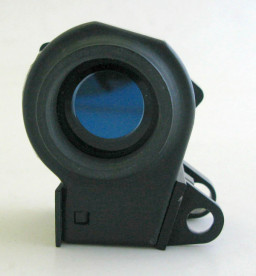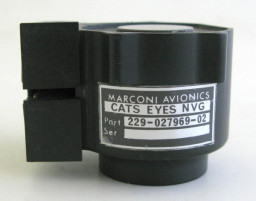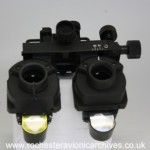In July 1981 work was started in the Company Research Laboratory, FARL, to investigate design concepts for Night Vision Goggles for fixed wing aircraft application. The Cats Eyes™ NVG system allows for the combination of both a direct visual and an intensified image to be presented to the pilot's eyes. The two images are combined in a 1:1 relationship and complement each other. The Head-Up Display is seen through a direct visual path, and it is not degraded by unnecessary image intensification as it would be with conventional NVG systems. Additionally, the direct vision path through the optical combiner arrangement makes monitoring of cockpit displays and instruments considerably easier while the ability to scan either side of the combiners enhances peripheral vision and ensures better spatial awareness. The direct vision path also removes problems normally associated with light to dark transitions as the intensified image becomes progressively more noticeable as the direct visual image fades. The FLIR image on a HUD is viewed directly and by a simple IR tracker the Image Intensifiers can be turned off whenever the HUD image comes into the field of view of the Cats Eyes™.
The folding of the Cats Eyes™ optical system results in a circular 30 degrees field-of-view with some clipping of the image in the lower right and lower left. The system is compact and rugged, and the restrictions on head mobility imposed by the depth of conventional NVG systems are avoided. While the system incorporates a single handed quick release mechanism for the helmet interface, it can be configured to include an automatic separation system on ejection and designed growth will enable it to accept the latest image intensifier technology as it becomes available. The benefits of the system have been extensively proven in low-level night attack flying trials, which used a fully integrated NVG-compatible cockpit and Forward Looking Infra-Red (FLIR) generated head-up display imagery, together with a head-down multifunction display.
In March 1982 a demonstrator was produced which had a field of view of 45deg horizontal and 30deg vertical and achieved all the design targets with a low head mounted mass and minimum moment about the pilot's head. Favourable evaluation lead to the manufacture by the Airborne Display Division of flyable prototypes. A story from the early trials was that a set of Goggles was sent up to the Harley Street Institute of Opthamology for tests on the peripheral vision while wearing them.
Cats Eyes™ NVG were sold to the US Marine Corps for the AV8-B and performed well in combat during the 1990-91Gulf War.






